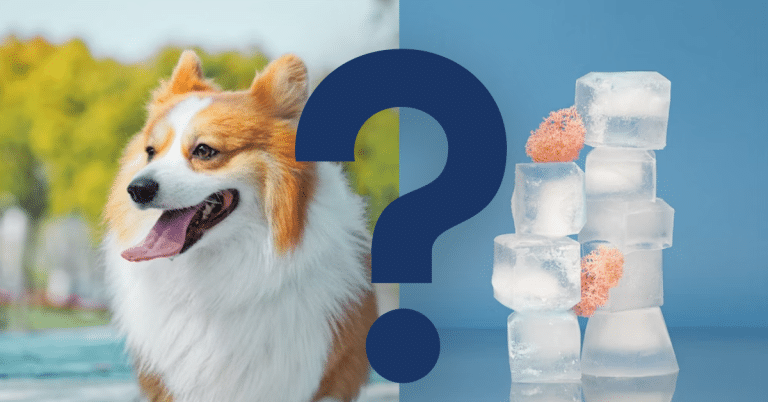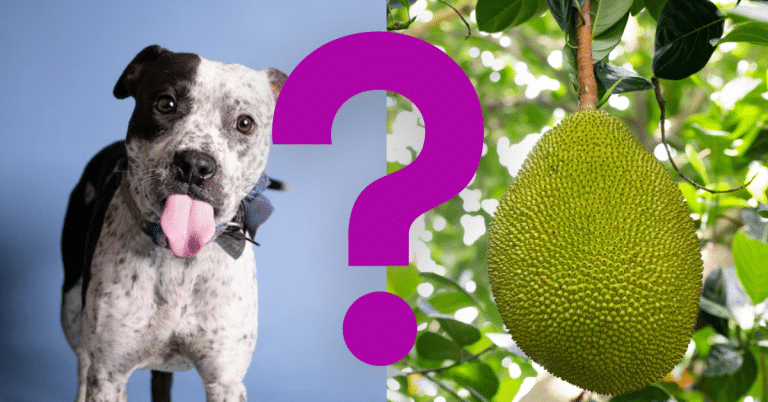Can Dogs Eat Clams? A Vet’s Opinion

Clams are bivalve mollusks with two shells in saltwater or freshwater habitats, but can you feed clams to your dog?
Yes. In moderation, dogs can eat clams. Clams are protein-rich and include essential nutrients such as omega-3 fatty acids, vitamins, and minerals. However, it is critical to verify that the clams are adequately prepared and free of any seasonings or additions that could be hazardous to dogs. Removing the shell before serving is essential because it can be a choking danger. As with any new food, introduce clams gradually, and watch for adverse reactions. For particular food suggestions for your dog, see your veterinarian.
Benefits Of Clams For Dogs
When included in a balanced diet, clams can benefit dogs. Here are some of the benefits:
Rich In Protein
Clams are an excellent source of high-quality protein, which is necessary for dogs. Protein promotes muscle growth, repair, and development in general.
Omega-3 Fatty Acids
Clams contain omega-3 fatty acids, specifically EPA (eicosapentaenoic acid) and DHA (docosahexaenoic acid). These fatty acids contain anti-inflammatory effects that can help dogs with joint problems, allergies, or skin problems.
Variety Of Nutrients
Clams include a variety of critical vitamins and minerals, including B12, C, and E, as well as iron, zinc, and selenium. These nutrients benefit overall health, immune system function, and skin and coat health.
Low In Fat
Clams are relatively low in fat, benefiting dogs requiring a leaner diet. They provide a lean protein choice without increasing the fat content of their meals.
Digestive Health
Clams include dietary fiber, which can help maintain a healthy digestive system and regular bowel motions.
Dental Health
Chewing on clams can assist dogs’ dental health by reducing plaque and tartar buildup. However, ensure the clams are entirely cooked and shell-free, as shells can pose a choking threat or harm the teeth if swallowed.
Remember that while clams have potential health benefits, moderation is essential. Excessive clam eating can cause an imbalance in your dog’s diet or stomach distress. Introduce clams gradually, monitor for adverse responses, and consult your veterinarian about the proper quantity, size, and frequency according to your dog’s needs.

How To Safely Give Clams To Dogs
It is critical to follow some safety recommendations while feeding clams to your dog to ensure their safety. Here’s a step-by-step guide on introducing clams to your dog’s diet safely:
Consult Your Veterinarian
Talking with your veterinarian before introducing new food to your dog is always a good idea. Depending on your dog’s health, dietary needs, and allergies or sensitivities, they may provide precise advice.
Choose Fresh, High-Quality Clams
Make sure the clams you buy are fresh and from a recognized source. Clams with broken shells or a strong odor should be avoided as they may be ruined.
Cook The Clams Thoroughly
Cooking clams before feeding them to your dog is critical. Cooking minimizes the possibility of bacterial contamination, which can harm dogs such as Salmonella or E. coli. Steam or boil the clams until they open, then discard those not open throughout the cooking process.
Remove The Shells
After the clams have been cooked, eradicate the shells. If ingested, the shells might cause choking or harm your dog’s teeth or digestive tract. Only give your dog soft, cooked clam meat.
Chop Or Mince The Clam Meat
Cut the clam meat into small, bite-sized pieces to make it easier for your dog to chew and digest. This step is especially critical for smaller dog breeds or those with dental problems.
Start Slowly
Start with a tiny amount when adding clams to your dog’s diet for the first time. Keep an eye out for any adverse effects, such as gastrointestinal discomfort or allergic reactions in your dog. If all works well, progressively increase the portion size over time.
Serve As An Extra Treat
Clams should be considered an extra treat or addition to your dog’s balanced diet. They should not be used to replace the vital nutrients that a complete and balanced commercial dog meal provides. Ascertain that the overall diet fits your dog’s nutritional requirements.
- Keep an eye out for allergies
- or sensitivities.
After feeding your dog clams, watch for any signs of allergies or sensitivities. Itching, skin rashes, stomach difficulties, and behavioral changes are all possible symptoms. If any negative responses occur, stop feeding the clams and see your veterinarian.
By following these suggestions, you can introduce clams into your dog’s diet and provide them with the possible benefits they offer while maintaining their safety and well-being.
Will Clams Make A Dog Sick?
While clams can be a healthy and nutritious supplement to a dog’s diet, there are some hazards to be aware of. Feeding clams to dogs, especially if they are raw or incorrectly prepared, can result in various illnesses or health problems. The following are some of the most prevalent illnesses that can develop from eating infected clams:
Food Poisoning
Raw or undercooked clams may contain bacteria such as Salmonella or E. coli, which can cause food poisoning in dogs. Vomiting, diarrhea, abdominal pain, fever, and loss of appetite are all possible symptoms.
Shellfish Poisoning
Certain clam species, such as razor or butter clams, can collect poisons in their tissues, such as saxitoxin or domoic acid. Toxins in shellfish can cause shellfish poisoning in dogs, resulting in symptoms such as nausea, vomiting, diarrhea, dizziness, muscle weakness, and, in severe cases, seizures or respiratory difficulty.
Allergic Reactions
Dogs can acquire shellfish allergies or sensitivities, especially clams. Itching, redness, or swelling of the skin, hives, gastrointestinal discomfort, or respiratory problems are all symptoms of allergic responses. Severe allergic responses can make breathing difficult and necessitate rapid veterinarian intervention.
Choking Or Gastrointestinal Obstruction
Clamshells can harm dogs if not carefully removed. Consuming clam shells can also cause gastrointestinal blockages, resulting in symptoms such as vomiting, abdominal pain, and loss of appetite.
When feeding clams to dogs, taking precautions such as thoroughly boiling them, eradicating shells, and avoiding seasoning or additions is critical. You may reduce the danger of these ailments and assure your dog’s safety by using suitable preparation procedures and introducing clams gradually and in moderation. If your dog suffers from adverse reactions or disease from eating clams, consult your veterinarian for proper advice and treatment.
Can dogs eat clam variations?
Dogs can safely consume simple, cooked clams without flavors or additions. It should be noted, however, that certain clam varieties may not be healthy for dogs due to potential health hazards or poisonous substances. Here is a list of clam varieties and their dog considerations:
Steamed or boiled clams: Dogs can eat plain, steamed, or boiled clams without seasonings or additives. To eradicate bacteria, ensure they are fully cooked and remove the shells before serving.
Raw clams may contain hazardous bacteria such as Salmonella or E. coli, which can cause dog foodborne diseases. It is highly advised that dogs not be fed raw clams.
Canned clams: They may contain chemicals, preservatives, or excessive sodium, which might harm a dog’s health. Because of these potential chemicals, avoiding canned clams in favor of fresh or frozen clams is better.
Smoked Clams: Clams smoked or flavored with herbs, spices, or other additions are unacceptable for dogs. These extra additives, particularly garlic, onion, and excessive salt, might be dangerous.
Clam chowder or clam-based soups: Clam chowder or soups frequently contain poisonous or digestive substances such as onions, garlic, butter, or cream. These products are not generally advised for dog eating.
When feeding your dog clams, ensure they are prepared without any seasonings. To establish if clams are acceptable for your dog’s diet, examine your dog’s health needs and speak with your veterinarian.

Vet’s Summary
Clams can be a healthy supplement to a dog’s diet if adequately prepared and given. Cooked clams are high in protein, omega-3 fatty acids, and vitamins and minerals. However, raw clams, seasonings, and chemicals that may be dangerous should be avoided. To avoid choking, shells should be carefully removed. While clams may have health benefits such as healthier skin and coat, joint support, and digestive health, they should be used in moderation. Before introducing clams to a dog’s diet, contact a veterinarian and closely monitor for bad reactions or allergies.
In addition to including clams in the dog’s food, the owner may want to consider providing their dog with probiotic pills. Probiotics are healthy bacteria that can help dogs’ digestive health and immune system. They can ease digestion and boost nutrient absorption while maintaining a healthy balance of gut bacteria. Because food changes, such as adding clams, can occasionally upset the dog’s digestive tract, probiotic supplements can help. However, speaking with a veterinarian before choosing the optimum probiotic supplement and dose for the dog’s needs is critical. The veterinarian can evaluate the dog’s overall health, consider any current conditions or drugs, and make personalized recommendations for adding probiotics to the dog’s regimen.
Videos To Watch
If you are wondering what related foods are good to give your dog, watch this:
And if you want to know what a dog can NOT eat, watch this:






